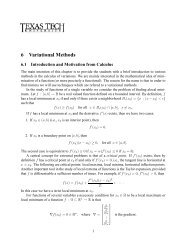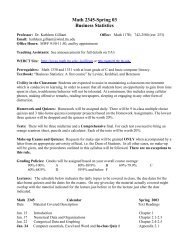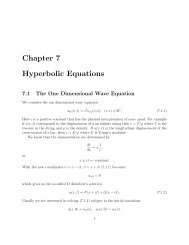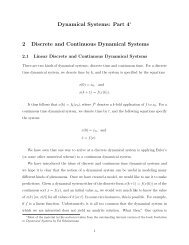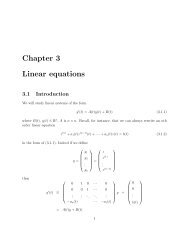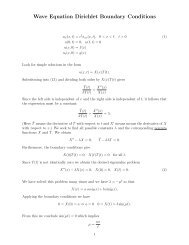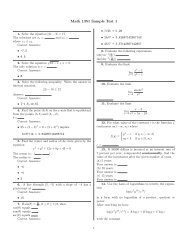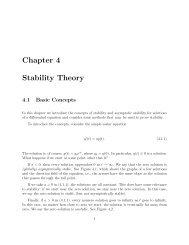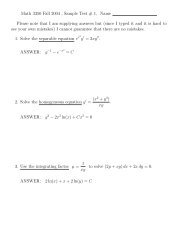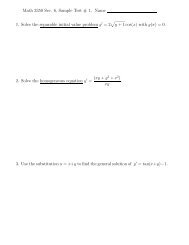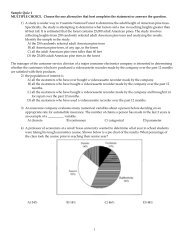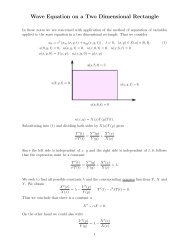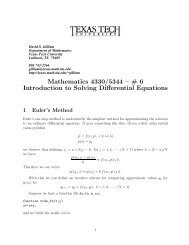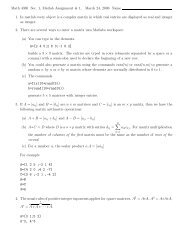Chapter 6 Partial Differential Equations
Chapter 6 Partial Differential Equations
Chapter 6 Partial Differential Equations
You also want an ePaper? Increase the reach of your titles
YUMPU automatically turns print PDFs into web optimized ePapers that Google loves.
6.3. CHARACTERISTICS AND HIGHER ORDER EQUATIONS 43<br />
Thus, by our construction of ϕ, wehave<br />
which implies<br />
aϕ 2 x +2bϕ x ϕ y + cϕ 2 y =0<br />
a (ϕ 1x + iϕ 2x ) 2 +2b (ϕ 1x + iϕ 2x )(ϕ 1y + iϕ 2y )+c (ϕ 1y + iϕ 2y ) 2 =0.<br />
Collecting the real parts we have<br />
a ( ϕ 2 1x − ϕ 2 2x)<br />
+2b (ϕ1x ϕ 1y − ϕ 2x ϕ 2y )+c ( ϕ 2 1y − ϕ 2 2y)<br />
=0.<br />
We now collect the terms involving ξ = ϕ 1 on the left and those involving η = ϕ 2 on<br />
the right to get<br />
aξ 2 x +2bξ x ξ y + cξ 2 y = aη 2 x +2bη x η y + cη 2 y<br />
which from (6.3.10) gives<br />
ã = ˜c.<br />
Next we collect the imaginary parts to get<br />
2<br />
(aϕ 1x ϕ 2x + b ( )<br />
)<br />
ϕ 2x ϕ 1y + ϕ 2y ϕ 1x + cϕ1y ϕ 2y =0,<br />
which implies<br />
˜b = aξx η x + b ( ξ y η x + ξ x η y<br />
)<br />
+ cξy η y =0.<br />
Also, since ˜b = 0, we know from invariance that<br />
−ã˜c = ˜b 2 − ã˜c 0, y > 0,<br />
into canonical form.<br />
In this case we have<br />
dy<br />
dx = iy x = b + i√ ac − b 2<br />
a



